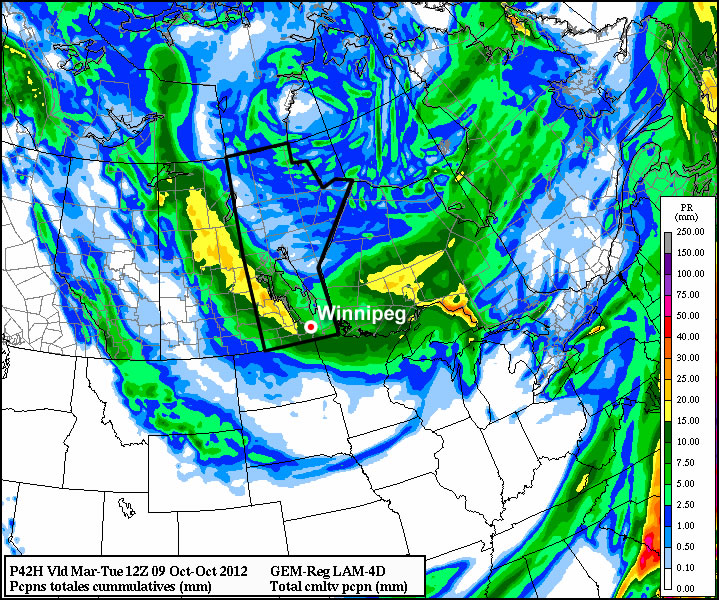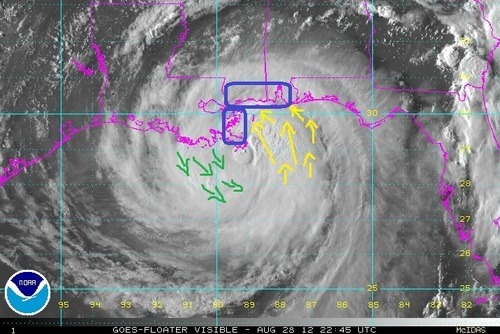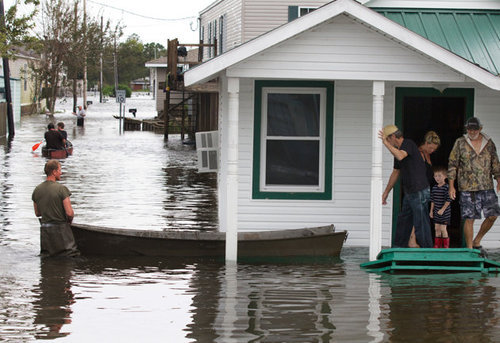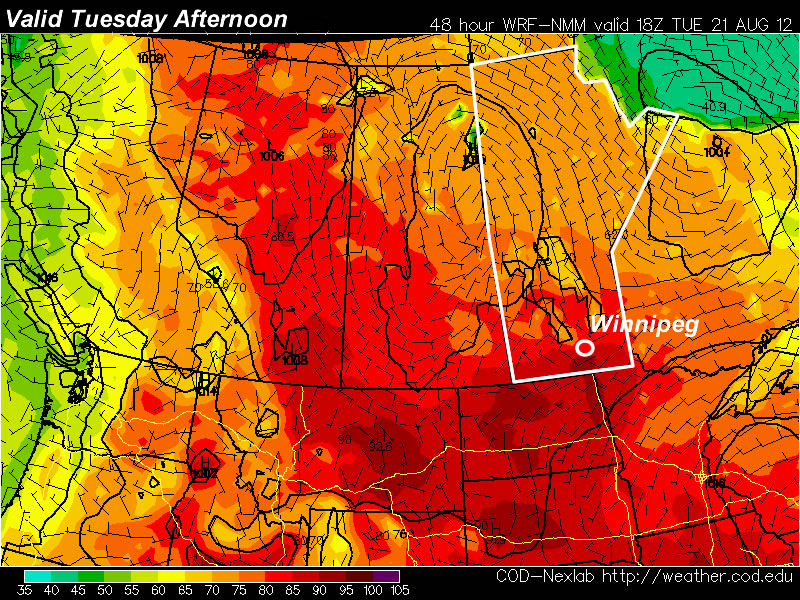This Thanksgiving will be nothing like last year’s (which featured temperatures in the twenties), as rain and wet snow make for a rather miserable holiday Monday.

A low pressure system sliding south-eastward through Manitoba on Monday will be responsible for the precipitation, with rain beginning to move into Southern Manitoba early Monday morning. Temperatures on Monday will be cool, but generally not cold enough for snow with values hovering in the mid single digits during the daytime. By evening there will be a changeover to snow in some areas, mainly portions of Western Manitoba, as colder air is pulled down from the north. Areas in the Red River Valley can expect a bit of wet snow late Monday evening into the overnight period, but with surface temperatures remaining above zero, no notable accumulation is expected. Total precipitation accumulations will generally range from 10 to 20mm across Southern Manitoba by early Tuesday.
Unfortunately, conditions will improve little for Tuesday. It will be a chilly start to the work-week as cold air pulled down by the previous day’s low pressure system will not allow temperatures to climb much higher than the mid single digits at best. Monday’s low pressure system will have departed by Tuesday morning, so no more significant precipitation is expected (save for perhaps a few scattered showers or flurries). At this point models keep us in the single digits for Wednesday as well, so even normal weather will continue to elude us.
The late week period looks to remain fairly miserable, with temperatures staying stuck in the single digits. No more significant precipitation is expected later this week.




